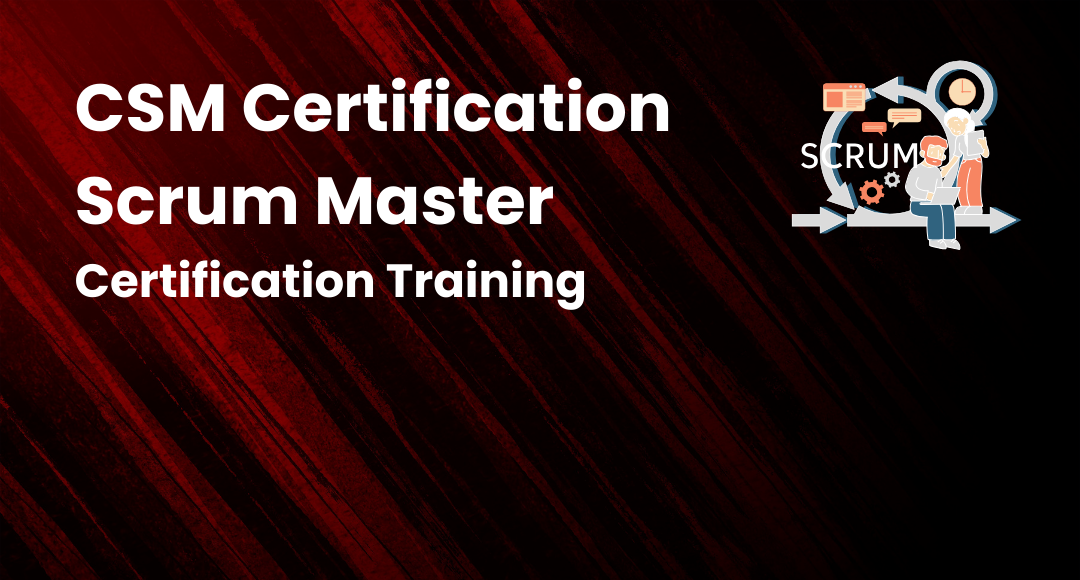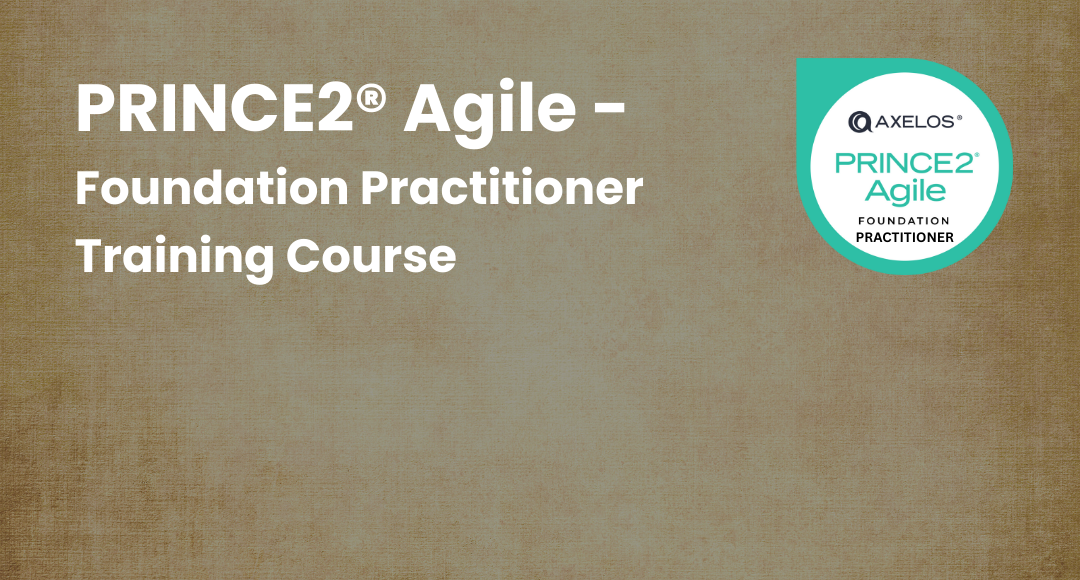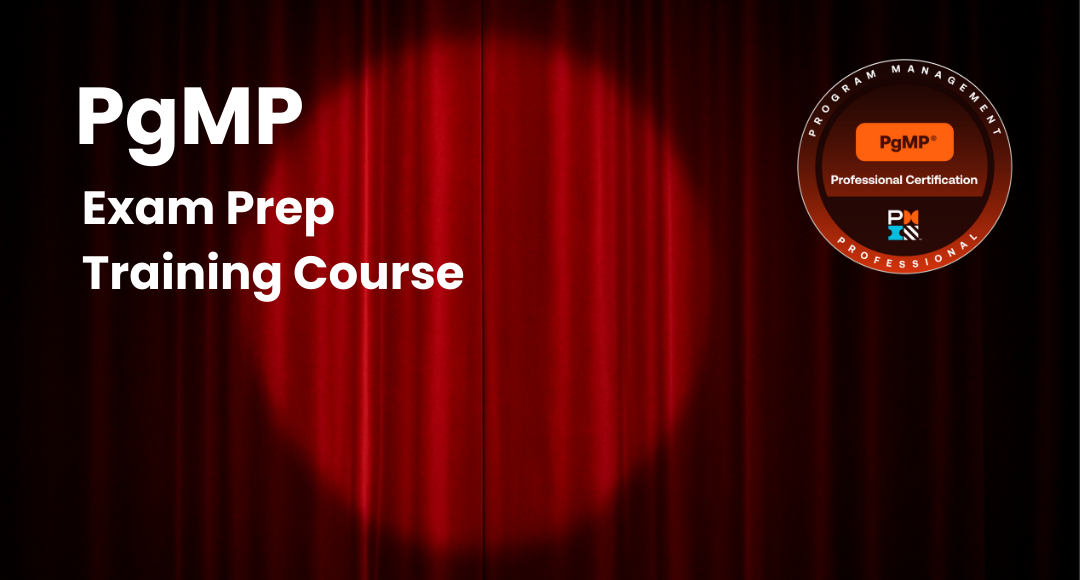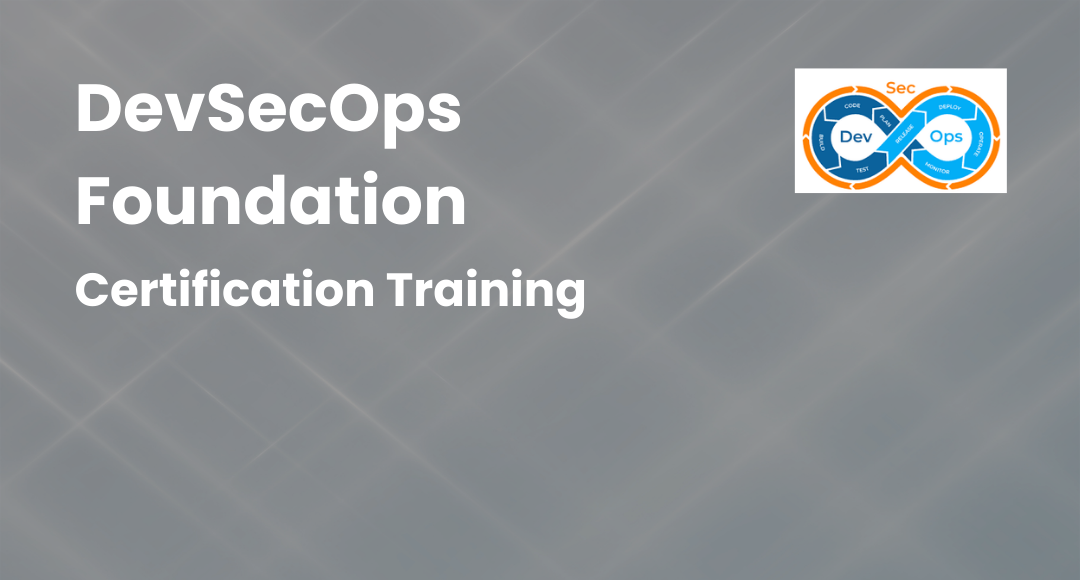Agile Project Management Explained
-
 By Nandini
By Nandini - Published on Mar 20 2023

Table of Contents
- Introduction
- History of Agile Project Management
- How is Agile different from other Project Management Methods?
- What are the Core Values of Agile?
- Principles of Agile
- What are the Benefits of Agile?
- Advantages of Agile Project Management
- Hybrid Solutions using Agile Methodology
- How will Agile Project Management help you?
- Steps of Agile Project Management
- Hurdles faced while adopting the Agile Methodology
- Agile skills that a Project Manager must have
Introduction
Project management has become an essential part of every business project. Although many people think that project management adds to the costs, it can help you cut down on over-expenditure.
Effective project management will help you save costs and reduce the chances of failure. And spending extra money on project management is always better than ending up bankrupt due to a failed project.
Great project management requires greater planning. You can’t expect to succeed in a project without planning it first. And, a great plan comes when you have a robust methodology to follow. When you talk about effective project management, you cannot ignore the agile project management methodology.
A summary of agile project management
Agile project management can be described as a fragmenting system of project management. It is an iterative approach to managing projects in a business environment.
The main agenda of the agile methodology is to focus on continuous releases and incorporate necessary changes at each step. You need to take the customer’s point of view and feedback into account. That’s what makes the agile methodology stand out from the rest.
One of the biggest advantages of the agile methodology is flexibility and agility. When you incorporate the agile methodology into your projects, it becomes flexible and open to changes. As a result, any change or shift in the economy will not have a drastic impact on your business.
The agile methodology was invented for the software companies that used to struggle to meet with an ever-changing trend of consumer requirements. After the inclusion of the agile methodology into projects, a lot of companies profited and created a successful path.
Software companies are adopting agile wholeheartedly because of its numerous benefits in terms of profitability and risk management. Development of speed and ability to respond quickly form the backbone of agile methodology.
The primary reason for the failure of software projects is poor risk management. When you don’t assess the risk factors, you can end up in a big mess. Most of the companies in the early days refrained from making drastic changes into their policies or frameworks. The rigid nature of projects paved the way to a high rate of failure. With the agile methodology, the rigidity turned into flexibility, and companies can now enjoy huge benefits from it.
History of Agile Project Management
A common question that people ask is, when was agile project management started? The surprising thing here is that agile was not developed to become a software management tool. Instead, it was designed as ‘lean’ for Toyota back in the 1940s.
Toyota used lean for reducing waste and increasing the efficiency of projects. Back then, it was not accessible. Slowly after Toyota gained massive profits, people started wondering about the company’s secret.
It was found that Toyota used a newer method that was very different from the traditional waterfall approach. The main difference was in the approach. Agile uses an innovative approach where priority is given to the most important issues.
On the other hand, the waterfall method followed a sequential timeline and didn’t have any specifications for risk management. When other companies found out about this new methodology, they quickly adopted it for their projects.
Who should use agile project management?
Toyota created an agile methodology for software management and development. Within a span of a few years, people started using it for every sphere. From marketing to the automotive industry, everyone is using agile for their projects.
Delivering innovative products is the key reason behind adopting the agile methodology. There are no limitations as to who can use the method. Anyone interested in improving their services or products can try adopting it.
How is Agile different from other Project Management Methods?
Usually, the end product of projects is hard to define. So, if you go with the waterfall method, you will have a hard time completing the project successfully. The agile process removes this ambiguity and lets you define the end result as you progress.
The USP of agile is that it doesn’t follow a sequential and rigid approach. So, you will be able to make the necessary changes to the project as you progress. It is one of the main reasons why agile is popular even today.
Understanding the basics of agile is vital if you want to apply it to your work. Decide with your team, what necessary changes you want to make in your methodologies. There are many companies that have made the switch to agile because of increased flexibility. You can do the same by taking into account the fundamental factors of agile.
What are the Core Values of Agile?
There are four core values of the agile methodology that are common to all the industries. If you want to adopt the agile framework, you need to understand these four values.

- Prefer individuals to processes and tools
Although technology is booming rapidly, you still need a human touch for your projects. Always depending on tools and processes might not be sufficient, as machines still have to become emotionally intelligent. The agile process focuses on involving real people into the framework and taking their feedback for various services.
Interactions are more critical for adapting to changing scenarios. When you take constant feedback, your work processes will improve, and you will be able to get ready for future changes.
- Practicality over wordy documentation
Documentation is essential in every project, but relying solely on the documentation without taking into account the practical effects of the project is not feasible. Everything that looks good on the text doesn’t have to result in a right way in real life. Developing working software is vital as you would be able to understand the real-life implications. It will help you create what is needed without overloading or wasting your resources.
- Choosing customers over negotiations
Customers are the most valuable assets of an organization. Involve your customers in everything and take their constant feedback. Be it internal or external customers; taking care of their requirements will help you make better profits. Customers need to be satisfied so that they will stay loyal to your company, and you will have the edge over your competitors.
- Not refraining from changing plans
Often projects meet with hurdles, and you have to ditch a project in the middle. Some companies are afraid to make necessary changes to their plans because they feel that it would be risky. The traditional approach didn’t let anyone make changes to their projects. But, the agile methodology makes companies flexible, and you will be able to make changes throughout the process.
Principles of Agile
There are 12 key principles of agile that companies focus on while adopting the agile methodology. Each of the 12 principles is important for project management and needs the utmost care while planning.
1) Satisfying customer requirements should be your top priority. It is attained through rapid and consistent delivery.
2) Embrace changes in the business environment to stay ahead of your competitors. A company that is scared of adapting to changes falls behind and fails to cope up with rising trends.
3) With the agile methodology, products are always delivered with higher frequency.
4) Always collaborate with your stakeholders. They will drive your growth and bring you profits.
5) Involve all the team members, developers, and stakeholders in your projects. Involving everyone will create open communication channels and lead to a higher inflow of innovative ideas.
6) Face-to-face meetings are valuable as you will build trust and credibility by showing yourself. For a project to be successful, these meetings are beneficial.
7) A working product is the only mark of success. There is no point in completing a project if it doesn’t work.
8) A constant and ongoing pace is important for the successful completion of a project. Sustainable development processes are the key to a successful project.
9) Giving proper importance to technical excellence and useful design is crucial. By doing that, agility can be enhanced.
10) Simplicity in designing and planning is essential for every project.
11) Prioritize the creation of self-organizing teams. They will give you the most effective ideas and requirements through continuous brainstorming.
12) Continuous improvisations are necessary for improving efficiency. Focus on fine-tuning the minute aspects for the complete success of projects.
These 12 principles are necessary for every project. If you want to adopt the agile methodology, adhere to the principles.
Adopting the Agile Methodology
Agile was developed for the software industry. But nowadays, many companies are willing to accept agile into their business processes. Apart from the software industry, the financial and professional sector have been adopting agile at a faster rate. For instance, more than 14% of companies in the financial services sector have taken the agile methodology into their work processes.
You can also adopt the agile methodology by applying the 12 principles and the four core values into your work processes.
What are the Benefits of Agile?
Improving the development process and streamlining were the earliest advantages of agile. With business changing rapidly, a lot of other benefits of agile have been discovered. Identifying defects and issues in business processes is one of the crucial purposes of agile. When you eliminate errors form your projects, you will be able to manufacture defect-free products easily.
Nearly all the companies are going digital and taking their businesses online. In such a scenario, adopting agile becomes easier. The main focus of agile is on creating short and iterative sessions, also known as sprints. Each sprint takes on an essential area of work and aims for making it defect-free. So, the main principle of agile is breaking up the work into smaller parts so that each area will get appropriate attention.
If you are looking for a methodology that will help you manage projects, the agile is best for you. It will transform your work processes and create a methodological alignment of projects. There are a lot of benefits of using agile. Here are some of the crucial advantages of adopting agile in your projects.
- You will get enhanced flexibility in your business projects.
- More productivity.
- There will be increased transparency in all your work processes.
- Increased quality of deliverables
- Decreased risks and defects
- You will experience increased engagement of team members and stakeholders.
- Higher customer satisfaction
Read more about Agile Project Management
Advantages of Agile Project Management
In the field of project management, agile is highly beneficial. It provides efficient project teams and leads to higher customer satisfaction. Here are some of the important advantages of agile project management.
- Rapid deployment of innovative solutions. With the agile methodology, you will be able to create and apply innovative solutions for all your project-related problems.
- Wastage will be reduced completely, and you can utilize your resources properly. The main advantage of reducing wastage is that your profits will automatically increase.
- Enhanced flexibility of work processes. Adapting to changes becomes more comfortable with agile.
- Higher chances of a project becoming successful. More focused efforts will result in more productivity.
- There will be a faster turnaround and decreased duration of intervals.
- Easier identification of issues and defects in projects will be an added advantage.
- Lesser stress in work environments.
- You can create lighter frameworks and simpler methodologies.
- Better control over projects.
- You will get increased customer satisfaction.
- More collaboration and feedback.
Hybrid Solutions using Agile Methodology
The agile methodology is unique in the way that it allows you to combine other methods and create innovative solutions for all your problems. Agile can be combined with a waterfall to create a hybrid approach.
For the steps that don’t require phase-wise planning, you can use agile in combination with traditional project management techniques. Planning a project involves a lot of effort, and you have to do it in a comprehensive and methodical manner. The steps towards planning are always slow and need time for proper analysis.
Although agile doesn’t mention documentation as a core area, it is incredibly crucial for any project. You can combine the traditional approaches here to include documentation as well. The hybrid approach makes sure that companies don’t face any difficulty while adopting agile.
In the development stage, projects require rapid and frequent changes for better results. The agile helps companies create appropriate frameworks that would suit their nature.
How will Agile Project Management help you?
There are many ways in which agile project management will help you. Here are the advantages of agile project management that you need to consider.

- You will improve the quality of your products.
Improving the quality of products and services is the trademark of agile project management. Enhancing the quality will prevent future problems and ensure that you don’t face any problems while executing the project.
We all know how technology has shaped the world. Using technical skills for improving design and quality will make your product stand out from others. A sustainable development method can be applied in the execution system to ensure that the product meets all requirements. It is essential to describe your needs early in the project so that there will be no confusion afterwards.
- Customer satisfaction will increase
Customers decide how good your product or service is. If you satisfy them, your project will become successful. When more people purchase your product and stay loyal to your organization, your profits will also increase.
Addressing customer issues is more accessible with agile project management as it suggests the employment of individuals skilled in interpersonal skills. Responding quickly and helping your customers would ensure that they remain loyal to you. Wherever possible, demonstrate the functionality of your product to the customers. It will make them trust you, and you can build credibility.
- Agile project management boosts team morale
A happy team will result in better work and more productivity. Keeping your team motivated becomes easier with agile as the workload is reduced. There is no external interference within a project team, so the members are able to work efficiently. Promoting healthy competition among team members will lead to everyone learning new skills and helping others.
- You can predict the outcomes of your project with accuracy
One of the best advantages of agile project management is predictability. The agile practices aim to help you predict the outcomes of your project. The project team and the project manager are able to figure the actual cost of each project step. That way, you can predict your performance and profits. The continuous monitoring and collection of data also help in the overall prediction.
- Risk is reduced in an agile environment
It is the most significant advantage of agile. Research shows that nearly 95% of projects fail. The biggest reason for project failure is poor risk management. Agile eliminates risks from a project and increases its chances of becoming successful.
The short length of project procedures ensures that risks are minimized. It allows you to keep a better tab on the project and identify issues right from the beginning. Agile will enable you to take constant feedback from customers, team members, and stakeholders. So, you can always find out where the problem lies. Paying heed to useful criticisms and acting to rectify them also helps in reducing the number of risks.
- You can collect accurate data
Collecting data is a part of every project management. These data help you estimate the parameters of the project like cost, time, performance, and profits. In agile, more importance is given to actual returns than the earlier guidelines and predictions.
Collecting real-time data helps in easy monitoring and also allows you to rectify a mistake right when it occurs. The traditional approaches didn’t allow you to collect data simultaneously while executing a project. But agile provides for the same. Updating constantly and monitoring the team’s performance will help your organization to function better.
Become Agile Certified Practitioner with PMI ACP Certification Training
Steps of Agile Project Management
The agile methodology project management is inventive and makes use of advanced project management systems to deliver a useful framework that is following the latest theories and techniques of project management.
There are a lot of steps involved in the Agile methodology process, also known as the stages of the Agile methodology. The Agile methodology cycle consists of some essential steps that will help you adapt the technique easily.
Those steps include specific deliverables known as the agile methodology deliverables and will help you create better products for consumption by the customers. The most crucial goal of agile project management is reducing the development cycle and aiming for rapid product release.
When you shorten the time required for each project, it allows you to react rapidly to changes. Here are the steps involved in agile project management.
1) Creating a plan for better product manufacturing
It emphasizes on creating summaries of the idea of the product and takes care of the goals. The beginning of every project should be from making an effective plan. Developing a project scope will also help with the entire process.
2) Building a roadmap for useful observing of requirements
The roadmap of the product takes into account the requirements of the manufacturing process. It is beneficial if you want to understand the needs of customers as well as your organization. Creating product backlogs will help you deliver the final product.
3) Completing your project by eliminating backlogs
A product backlog is all the things that you have to do for the project. Arrears are also the things that will lead to the ruining of a project if not appropriately addressed.
4) Releasing the product
This is a plan that needs to be surveyed for the release of a product. Adequate planning will make sure that all the process is followed correctly and that the product has been built according to the strategies. Making a fool-proof plan before kicking off the project will ensure that you will meet with customer requirements in a better way.
5) Fulfilling user requirements
The sprint backlog in a business project considers the necessities and goals that are an integral part of the product manufacturing procedure. The stakeholders and the team members hold a meeting in which all the requirements are openly discussed.
Roles are assigned from an early stage, and the work is assessed for any inconvenience. Everyone has to carry out his or her job effectively to ensure that the customers are satisfied.
6) Benefits for everyone.
While designing a product, more considerable efforts should be given to the welfare of all the parties involved. Hold frequent meetings and show the finished product to the stakeholders to take their feedback on the products. Be it in-person or through conferences, you have to keep communication open so that everyone will get a fair chance of voicing their opinions about the product.
Each sprint meeting will help you understand customer requirements better and incorporate them into your projects.
Hurdles faced while adopting the Agile Methodology
If you are trying to adopt agile into your work process, you need to understand the various areas where you might face problems. Here are the most common hurdles faced by organizations while trying to adopt the agile methodology.
- Lack of structure for supporting agile
It is difficult to convince everyone for agile. Although your team might be ready for it, the other employees might not be so responsive. You have to include the stakeholders, sponsors, and other executives for the useful inclusion of agile in your work processes.
- Lack of clarity while deciding to adopt agile
Some people might be confused while trying to imagine the consequences of the agile methodology. Therefore, you must discuss everything openly and hold doubt sessions for anyone having trouble with the new method. Strategic alignment of ideologies and thoughts is vital if you wish to adopt agile.
- Rushed testing and development cycles
Sprints need time for proper analysis. If you rush through the process, you stand to lose valuable feedback. There can be significant consequences of not following a comprehensive monitoring system. Take time to find out all the defects and loopholes in your project. They can often lead to better management of the overall project. Ignoring shortcomings or detecting them late into the project can cause severe harmful effects.
- Lack of trained agile professionals
Although agile is popular, it is difficult to find highly skilled and trained agile practitioners. To make the most of agile methodology, you have to find the proper personnel for implementing agile into your projects. You have to look for the top talent and hire them for your projects. One way to do that is to hire certified individuals as they have a better understanding of the agile principles and tools.
Agile skills that a Project Manager must have
If you are a project manager or are looking to hire someone, consider the following skills as the most critical factors for determining an efficient project manager.
- Sorting through the work and focusing on the one that is hugely beneficial for the organization. Focusing on essential work will save time, resources, and money. You will be able to cut down costs, and that will lead to increased profits.
- Remaining calm under heavy pressure and not making bad decisions in a hurry.
- Influential motivational skills and the ability to guide a team are required in a project manager. Reliable leadership quality is the mark of an efficient project manager.
- Organizational skills are the critical aspects of a project manager. The ability to prioritize work and stay focused is a much-appreciated skill.
- Reacting quickly to rapid changes in the environment and adapting rapidly to them.
Cutting-edge competition is driving the corporate world. The world is moving towards harsher economic reforms that will ensure that only the best make it to the top. Surviving in a volatile environment requires stringent measures, and adopting a new project management method is a part of it. Choosing agile project management will help you get the most out of your organization and stay ahead of your competitors.
You can learn all about it by taking up project management training and earning the PMP certification from PMI. The best working forces might commit mistakes, but Agile is software and its complex algorithms ensure that no mistakes are made by any of the team members.
To get full details about Agile training courses offered by Sprintzeal and top agile certifications, reach us at Click Here or chat with course expert
Popular Certification Course Recommended for you:
CSPO Certified Scrum Product Owner Certification
Subscribe to our Newsletters
Popular Programs
PSM® - Professional Scrum Master Certification
Live Virtual Training
- 4.1 (75 + Ratings)
- 17k + Learners
Data Engineering on Microsoft Azure (DP-203)
Live Virtual Training
- 4.9 (48 + Ratings)
- 58k + Learners
Trending Posts
SAFe Certifications List - Best of 2026
Last updated on May 30 2023
Agile Scrum Methodology - Benefits, Framework and Activities Explained
Last updated on Mar 25 2024
Unlocking Career Opportunities in Product Management: Your Roadmap to Success
Last updated on Oct 25 2023
Essential Tools for Agile Project Management 2026
Last updated on Mar 15 2024
Scrum Master Career Path Explained
Last updated on Jul 5 2022
CSM vs. PSM - Which Scrum Certification is Better?
Last updated on Mar 14 2023
Categories
- Other 69
- Agile Management 47
- Cloud Computing 56
- Project Management 173
- Big Data 66
- Business Management 88
- Digital Marketing 78
- IT Service Management 29
- Programming Language 58
- AI and Machine Learning 77
- IT Security 112
- Quality Management 78
- IT Hardware and Networking 26
- Microsoft Program 4
- Workplace Skill Building 13
- Risk Management 9
- Information Security 8
- Leadership and Management 9
- Corporate Training and Development 1
Trending Now
List Of Traits An Effective Agile Scrum Master Must Possess
ArticleDevOps Vs Agile Differences Explained
ArticleDevops Tools Usage, and Benefits of Development Operations & VSTS
ArticleAgile Scrum Methodology - Benefits, Framework and Activities Explained
ArticleGuide to Agile Project Management 2026
Article10 best practices for effective DevOps in 2026
ArticleGuide to Becoming a Certified Scrum Master in 2026
ArticleWhy Should You Consider Getting a Scrum Master Certification?
ArticleCSM vs CSPO: Which Certification is Right for You?
ArticleAgile Manifesto - Principles, Values and Benefits
ArticleAgile Methodology Explained in Detail
ArticleEverything about Scrum Methodology
ArticleLatest Agile Interview Questions and Answers To Look For In 2026
ArticleScrum Interview Questions and Answers 2026
ArticleTop Scrum Master Responsibilities 2026 (Updated)
ArticleScrum vs Safe – Differences Explained
ArticleCSM vs. PSM - Which Scrum Certification is Better?
ArticleSAFe Implementation Roadmap Guide
ArticleAgile Release Plan Guide
ArticleAgile Environment Guide
ArticleAgile Coaching Guide - Best Skills for Agile Coaches
ArticleAgile Principles Guide
ArticleSAFe Certifications List - Best of 2026
ArticleAgile Prioritization Techniques Explained
ArticleScrum Ceremonies Guide
ArticleProduct Owner Certifications List
ArticleScrum of Scrums Guide
ArticleBusiness Agility Guide - Importance, Benefits and Tips
ArticleStakeholder Engagement Levels Guide
ArticleScrum Master Career Path Explained
ArticleScrum Career Path Explained
ArticleScrum Workflow - A Step by Step Guide
ArticleA guide to Agility in cloud computing
ebookProduct Roadmap: An Ultimate Guide to Successful Planning and Implementation
ArticleProduct Life Cycle in Marketing: Essential Strategies for Product’s Success
ArticleProduct Life Cycle Strategies: Key to Maximizing Product Efficiency
ArticleScrum Master Salary Trends in 2026
ArticleProduct Life Cycle Model: A Guide to Understanding Your Product's Success
ArticleWhat is a Product Owner - Role, Objectives and Importance Explained
ArticleSuccessful Product Strategies for Introduction Stage of Product Life Cycle
ArticleUnlocking Career Opportunities in Product Management: Your Roadmap to Success
ArticleSaturation Stage of Product Life Cycle: Complete Guide
ArticleEssential Tools for Agile Project Management 2026
ArticleImportance of Procurement Management Software in Modern Business
ArticleAI’s Hidden Decay: How to Measure and Mitigate Algorithmic Change
Article5 Best Custom Packaging Suppliers Compared (MOQ, Cost, Lead Time)
Article








+Certification+Training.png)








